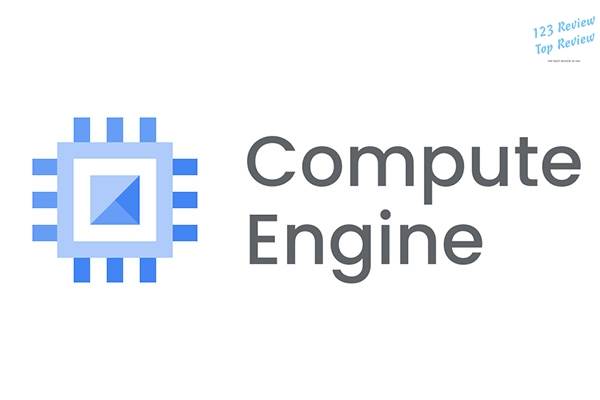Google Compute Engine (GCE) is a cornerstone of Google Cloud’s infrastructure services, offering users the ability to deploy and run virtual machines (VMs) on Google’s globally distributed data centers.
As a powerful Infrastructure as a Service (IaaS) offering, GCE is designed to meet the diverse needs of enterprises, developers, and researchers. Whether you’re building high-availability web applications, running complex computational models, or migrating legacy systems to the cloud, Google Compute Engine provides the flexibility, scalability, and security required to power your workloads efficiently.
Features of Google Compute Engine
Google Compute Engine is packed with features that cater to a wide array of use cases, ensuring that users can tailor their cloud environments to their specific needs.
Custom Virtual Machine Types
One of the most compelling features of Google Compute Engine is the ability to create custom virtual machine types. This feature allows users to fine-tune the exact specifications of their VMs, including the number of virtual CPUs (vCPUs), amount of memory, and storage options. Instead of being confined to predefined machine configurations, users can design their VMs to align perfectly with their workload requirements. This customization not only optimizes performance but also ensures cost-effectiveness by avoiding over-provisioning of resources.

Custom VMs are particularly beneficial for applications with specific performance needs, such as databases, high-performance computing tasks, and machine learning models. By aligning resources precisely with application demands, businesses can achieve higher efficiency and lower operational costs.
Predefined Machine Configurations
For users who prefer simplicity and speed in deployment, Google Compute Engine offers a wide selection of predefined machine types. These configurations are optimized for different types of workloads, providing a balance between performance, cost, and ease of use. The predefined machine types include:
- General-Purpose Machines: Ideal for a wide variety of applications, these machines offer a balanced mix of CPU, memory, and networking resources. They are perfect for everyday workloads like web servers, development environments, and small databases.
- Compute-Optimized Machines: These machines are tailored for compute-intensive tasks that require high CPU performance relative to memory. Examples include high-traffic web servers, gaming servers, and scientific simulations.
- Memory-Optimized Machines: Designed for memory-intensive applications, these machines offer higher memory-to-CPU ratios. They are ideal for in-memory databases, large-scale data processing tasks, and real-time analytics.
- GPU-Enabled Machines: For tasks that require massive parallel processing power, such as machine learning, deep learning, and complex simulations, Google Compute Engine offers machines equipped with powerful GPUs.
These predefined configurations allow users to quickly select the right machine type for their application, reducing the time and effort required to deploy and scale infrastructure.
Live Migration Capabilities
Google Compute Engine’s live migration capabilities are a standout feature that ensures high availability and reliability of virtual machines. Live migration allows VMs to be moved seamlessly between physical hosts without downtime, even during maintenance events. This capability is crucial for maintaining continuous operation of applications, minimizing disruptions, and ensuring that mission-critical services remain available.
Live migration is particularly beneficial for enterprises running applications that require 24/7 uptime, such as e-commerce platforms, financial services, and global communication networks. By enabling maintenance and upgrades without impacting running applications, Google Compute Engine helps businesses achieve higher levels of service continuity and customer satisfaction.
Autoscaling and Load Balancing
Scalability is a fundamental requirement for modern cloud infrastructure, and Google Compute Engine excels in this area with its robust autoscaling and load balancing features. Autoscaling allows VMs to scale up or down automatically based on real-time demand, ensuring that applications have the necessary resources to handle traffic spikes while minimizing costs during periods of low demand.
Load balancing complements autoscaling by distributing incoming traffic across multiple VMs, ensuring that no single machine is overwhelmed. Google Compute Engine offers several types of load balancing, including global HTTP(S) load balancing, SSL proxy load balancing, TCP/UDP load balancing, and internal load balancing. These options allow users to tailor their load balancing strategy to the specific needs of their applications.
The combination of autoscaling and load balancing ensures that applications hosted on Google Compute Engine are both highly available and responsive, even under fluctuating traffic conditions. This makes GCE an ideal choice for hosting web applications, microservices architectures, and APIs that require dynamic scaling and high reliability.
Pricing Models for Compute Engine
Google Compute Engine offers a range of pricing models designed to provide flexibility and cost savings, allowing users to optimize their cloud spending based on usage patterns and business needs.
Hourly and Per-Second Billing
One of the key advantages of Google Compute Engine is its granular billing options. Users are billed on an hourly basis with per-second increments, meaning they only pay for the exact amount of time their VMs are running. This level of granularity is especially beneficial for workloads that require frequent start and stop operations, such as development and testing environments.
Per-second billing helps reduce waste and provides significant cost savings, particularly for short-lived or burstable workloads. This pricing model allows businesses to experiment with different configurations, run tests, and deploy temporary environments without worrying about paying for unused resources.
Sustained Use and Committed Use Discounts
To further enhance cost-efficiency, Google Compute Engine offers sustained use discounts. These automatic discounts apply to VMs that run for a significant portion of the billing month, providing substantial savings without the need for upfront commitments. The longer a VM runs, the higher the discount, making it an attractive option for workloads that require consistent, long-term usage.
For organizations with predictable workloads, committed use contracts offer even greater savings. By committing to a specific amount of resource usage over one or three years, users can receive discounts of up to 57% compared to on-demand pricing. Committed use contracts provide predictable pricing, making it easier for businesses to plan their cloud budgets and achieve cost stability.
Preemptible VMs Savings
Google Compute Engine’s preemptible VMs offer a highly cost-effective solution for workloads that can tolerate interruptions. Preemptible VMs are short-lived instances available at a significant discount—up to 80% compared to regular VMs. However, they can be terminated by Google if the resources are needed for other tasks.
Despite this limitation, preemptible VMs are ideal for batch processing, data analysis, machine learning training, and other non-critical tasks where cost savings outweigh the need for continuous availability. Businesses can use preemptible VMs to reduce costs significantly while still achieving the desired computational outcomes.
Regional Pricing Variations
Google Compute Engine’s pricing varies by region, allowing users to choose locations that offer the best balance between performance, cost, and proximity to end-users. This regional pricing flexibility is particularly beneficial for global businesses that need to deploy resources in multiple geographic locations.
By strategically selecting regions, businesses can optimize their cloud spending based on factors such as data sovereignty requirements, latency considerations, and local market conditions. Additionally, regional pricing variations enable users to take advantage of lower-cost regions for non-critical workloads, further enhancing cost-efficiency.
Security and Compliance in Compute Engine
Security and compliance are critical considerations for any cloud infrastructure, and Google Compute Engine is built with robust features to protect data, applications, and networks.
Identity and Access Management (IAM)
Google Compute Engine’s security foundation is built on Identity and Access Management (IAM), which provides granular control over who can access specific resources. IAM allows administrators to define roles and permissions, ensuring that only authorized users have access to sensitive data and operations.
IAM policies can be applied at the project, folder, or resource level, providing flexibility in managing access control across an organization. This ensures that security policies are enforced consistently, reducing the risk of unauthorized access and data breaches.
Shielded VMs and Confidential Computing
To protect against advanced threats, Google Compute Engine offers Shielded VMs, which are designed to defend against rootkits, bootkits, and other persistent malware. Shielded VMs include features such as secure boot, virtual trusted platform module (vTPM), and integrity monitoring, ensuring that the VM’s boot process and software stack are secure.
In addition to Shielded VMs, Google Compute Engine supports Confidential Computing, which provides hardware-based encryption for data in use. This means that sensitive data is encrypted even while it is being processed, protecting it from unauthorized access, including from cloud providers. Confidential Computing is particularly valuable for industries with stringent data security requirements, such as finance, healthcare, and government.
Data Encryption and Network Security
Google Compute Engine employs comprehensive data encryption practices to protect user data. All data stored on GCE is encrypted at rest using AES-256 encryption, and data in transit is encrypted using SSL/TLS. This ensures that data is protected both in storage and during transmission, safeguarding it from unauthorized access and interception.
In addition to data encryption, Google Compute Engine offers robust network security features. GCE’s global network infrastructure includes built-in DDoS protection, firewall rules, and private networking options, providing multiple layers of security for applications and data. Users can also leverage Virtual Private Cloud (VPC) networks to isolate their resources and control traffic flow, further enhancing network security.
Compliance Standards and Certifications
Google Compute Engine complies with a wide range of industry standards and certifications, demonstrating Google’s commitment to security, privacy, and regulatory compliance. GCE’s compliance portfolio includes:
- General Data Protection Regulation (GDPR): GCE meets the stringent data protection requirements set by the European Union’s GDPR, ensuring that user data is handled with the highest levels of privacy and security.
- Health Insurance Portability and Accountability Act (HIPAA): GCE is HIPAA-compliant, making it suitable for hosting healthcare applications and processing sensitive health information.
- Service Organization Control (SOC) Reports: GCE undergoes regular SOC 1, SOC 2, and SOC 3 audits, providing assurance that it meets industry standards for security, availability, and confidentiality.
These certifications make Google Compute Engine a trusted platform for businesses operating in regulated industries, ensuring that they can meet their compliance obligations while leveraging the power of cloud computing.
Use Cases for Google Compute Engine
Google Compute Engine’s flexibility and scalability make it suitable for a wide range of use cases, from simple web hosting to complex high-performance computing tasks.
Web Hosting and Application Development
Google Compute Engine is an excellent platform for web hosting and application development. Its scalable infrastructure allows users to deploy and manage web applications, content management systems (CMS), e-commerce platforms, and microservices architectures with ease.
With GCE, developers can create development and testing environments that closely mimic production, ensuring that applications perform as expected when deployed. Additionally, GCE’s autoscaling and load balancing features ensure that web applications remain responsive and available, even during traffic spikes.
High Performance Computing (HPC)
For compute-intensive tasks such as scientific simulations, data modeling, and machine learning, Google Compute Engine offers high-performance VMs equipped with powerful CPUs, GPUs, and high-speed networking. GCE’s HPC capabilities enable researchers and engineers to tackle complex problems and reduce processing times, accelerating the pace of innovation.
GCE’s scalability is particularly valuable for HPC workloads, allowing users to quickly scale up resources to handle large-scale simulations or data analysis tasks. The ability to integrate with other Google Cloud services, such as BigQuery and Cloud Storage, further enhances GCE’s suitability for HPC environments.
Big Data Processing and Analytics
Google Compute Engine is well-suited for big data processing and analytics, offering the performance and scalability needed to handle large datasets. GCE supports popular big data frameworks like Apache Hadoop, Apache Spark, and TensorFlow, enabling businesses to process and analyze data at scale.
By leveraging GCE’s integration with Google Cloud’s big data services, such as BigQuery and Dataproc, users can build end-to-end data processing pipelines that deliver insights in real time. This capability is essential for organizations looking to drive data-driven decision-making and gain a competitive edge.
Legacy System Migration to Cloud
Migrating legacy systems to the cloud is a common use case for Google Compute Engine. GCE provides the necessary infrastructure to run legacy applications with minimal modification, enabling businesses to modernize their IT environments while preserving existing investments.
Google Compute Engine’s flexibility allows users to replicate their on-premises environments in the cloud, ensuring that legacy applications continue to function as expected. Additionally, GCE’s robust security and compliance features provide the necessary protections for sensitive data during and after migration.
Management Tools and APIs
Google Compute Engine offers a comprehensive set of management tools and APIs that provide users with the control and flexibility needed to manage their cloud infrastructure effectively.
Google Cloud Console for VM Management
The Google Cloud Console is a web-based interface that provides a centralized view of all resources running on Google Compute Engine. Users can create, configure, and monitor VMs, as well as manage storage, networking, and security settings. The console’s intuitive design makes it easy for users to manage their infrastructure, whether they are deploying a single VM or managing a complex, multi-region environment.
The Cloud Console also provides detailed monitoring and logging capabilities, allowing users to track the performance and health of their VMs. With real-time metrics and alerts, users can quickly identify and resolve issues, ensuring that their applications remain operational and performant.
Command-Line Interface (gcloud)
For users who prefer command-line tools, Google Compute Engine offers the gcloud command-line interface. gcloud provides powerful options for managing GCE resources, allowing users to automate tasks, script deployments, and integrate with CI/CD pipelines.
The gcloud CLI supports a wide range of commands, enabling users to perform actions such as creating and managing VMs, configuring firewalls, and setting up load balancers. The CLI is an essential tool for developers and system administrators who need to manage GCE resources programmatically or incorporate infrastructure management into their development workflows.
Terraform and Infrastructure as Code Integration
Google Compute Engine integrates seamlessly with Terraform, a popular Infrastructure as Code (IaC) tool. Terraform allows users to define and manage their infrastructure using code, ensuring consistency, version control, and automated deployments across environments.
With Terraform, users can create reusable infrastructure templates, automate resource provisioning, and manage complex multi-cloud environments. The ability to treat infrastructure as code simplifies management and reduces the risk of configuration drift, making it easier to maintain a stable and predictable cloud environment.
Monitoring and Logging Services
Monitoring and logging are critical components of effective infrastructure management, and Google Compute Engine provides comprehensive tools for both. Google Cloud Monitoring (formerly Stackdriver Monitoring) offers real-time visibility into the performance and health of VMs, enabling users to track key metrics such as CPU usage, memory usage, and network traffic.
Google Cloud Logging (formerly Stackdriver Logging) provides centralized logging for all GCE resources, allowing users to collect, analyze, and respond to log data in real time. These tools are essential for identifying performance bottlenecks, troubleshooting issues, and ensuring that applications run smoothly.
Supporting Services and Integrations
Google Compute Engine is part of the broader Google Cloud ecosystem, offering deep integrations with other Google Cloud services and third-party tools. These integrations enhance the capabilities of GCE and enable users to build comprehensive cloud solutions.
Google Cloud Storage and Google Cloud SQL
Google Compute Engine integrates with Google Cloud Storage and Google Cloud SQL, providing reliable and scalable storage and database solutions. Google Cloud Storage offers a range of storage options, from standard storage for general-purpose use to archival storage for long-term data retention.
Google Cloud SQL is a fully managed relational database service that supports MySQL, PostgreSQL, and SQL Server. By integrating GCE with Cloud SQL, users can deploy scalable, high-performance databases that are easy to manage and maintain. This integration is particularly valuable for web applications, data analytics, and enterprise applications that require robust database support.
Load Balancing and Google Kubernetes Engine
Google Compute Engine’s load balancing capabilities ensure that traffic is distributed evenly across VMs, improving availability and performance. GCE offers global and regional load balancing options, allowing users to optimize traffic distribution based on geographic location, application type, and network conditions.
Google Kubernetes Engine (GKE) is a managed Kubernetes service that simplifies the deployment, management, and scaling of containerized applications on Google Compute Engine. By integrating GCE with GKE, users can take advantage of Kubernetes’ powerful orchestration features while leveraging GCE’s scalable infrastructure. This combination is ideal for microservices architectures, DevOps practices, and modern cloud-native applications.
Third-Party Integration with Compute Engine
Google Compute Engine supports a wide range of third-party integrations, enabling users to extend the functionality of their cloud environments. These integrations include DevOps tools (such as Jenkins, Ansible, and Chef), security solutions (such as Palo Alto Networks and Symantec), and monitoring services (such as Datadog and New Relic).
By integrating third-party tools with GCE, users can build customized solutions that meet their specific needs, whether it’s automating deployments, enhancing security, or monitoring complex environments. GCE’s open and flexible architecture ensures that users can seamlessly integrate the tools and services that are most important to their business.
Networking Services and Virtual Private Cloud
Google Compute Engine offers advanced networking services that provide users with greater control over their cloud infrastructure. Virtual Private Cloud (VPC) allows users to create isolated networks within Google Cloud, enabling them to define custom IP address ranges, configure firewall rules, and set up VPN connections.
VPC networks can span multiple regions, providing users with the flexibility to deploy resources in different geographic locations while maintaining a single, unified network architecture. GCE’s networking services also include options for interconnectivity with on-premises data centers, allowing users to build hybrid cloud environments that extend their existing infrastructure.
Best Practices for Optimizing Compute Engine
Optimizing Google Compute Engine for performance, cost, and reliability requires a strategic approach. By following best practices, users can ensure that their GCE environments are efficient, scalable, and secure.
Resource Utilization Strategies
Effective resource utilization is key to maximizing the efficiency of Google Compute Engine. Users should regularly review and rightsize their VMs, ensuring that they are not over-provisioned or under-utilized. Custom machine types can be used to tailor resource allocation to specific workloads, minimizing waste and reducing costs.
Autoscaling should be configured to dynamically adjust resources based on real-time demand, ensuring that applications have the necessary capacity during peak periods while scaling down during low-traffic times. Additionally, users should take advantage of sustained use and committed use discounts to further optimize their cloud spending.
Cost-Effective Architecture Design
Designing cost-effective architectures on Google Compute Engine involves selecting the right machine types, regions, and storage options. Preemptible VMs should be used for non-critical workloads to take advantage of significant cost savings, while regular VMs can be reserved for mission-critical applications that require high availability.
Users should also consider regional pricing variations when deploying resources, choosing regions that offer the best balance between cost, performance, and proximity to end-users. By carefully designing their cloud architecture, businesses can achieve the desired performance levels while minimizing costs.
Performance Tuning for Applications
Optimizing application performance on Google Compute Engine requires careful tuning of VM settings, networking configurations, and storage options. Users should monitor key performance metrics, such as CPU usage, memory usage, and network latency, to identify bottlenecks and optimize resource allocation.
Load balancing should be configured to distribute traffic evenly across VMs, ensuring that no single machine becomes a performance bottleneck. Additionally, users should consider using GCE’s high-performance machine types and GPUs for compute-intensive tasks, ensuring that applications run smoothly and efficiently.
Backup and Disaster Recovery Solutions
Implementing robust backup and disaster recovery solutions on Google Compute Engine is crucial for ensuring business continuity. Users should regularly back up their data using Google Cloud Storage, configuring automated snapshots and multi-region replication to protect against data loss.
Disaster recovery strategies should include failover configurations, such as setting up redundant VMs in different regions or zones. By leveraging GCE’s global infrastructure and automated tools, businesses can minimize downtime and recover quickly from unexpected outages.
Security Best Practices
Security is a top priority for any cloud environment, and Google Compute Engine provides a range of tools and features to protect against threats. Users should implement identity and access management (IAM) policies to control who has access to resources, ensuring that only authorized personnel can make changes.
Encryption should be enabled for both data at rest and data in transit, and users should regularly review security logs to detect any suspicious activity. GCE’s integration with Google Cloud’s security services, such as Cloud Security Command Center and Cloud Armor, provides additional layers of protection against attacks.
Conclusion: Maximizing the Potential of Google Compute Engine
Google Compute Engine is a powerful and flexible cloud computing platform that offers a wide range of features and capabilities for businesses of all sizes. By understanding the various aspects of GCE, from machine types and storage options to security and cost optimization, users can fully leverage the platform’s potential to drive innovation, reduce costs, and enhance the performance of their applications.
Whether you’re hosting a simple website, running complex data analytics, or migrating legacy systems to the cloud, Google Compute Engine provides the tools and infrastructure needed to succeed in today’s competitive digital landscape. By following best practices and taking advantage of GCE’s extensive integrations and supporting services, businesses can build resilient, scalable, and cost-effective cloud solutions that meet their unique needs.





